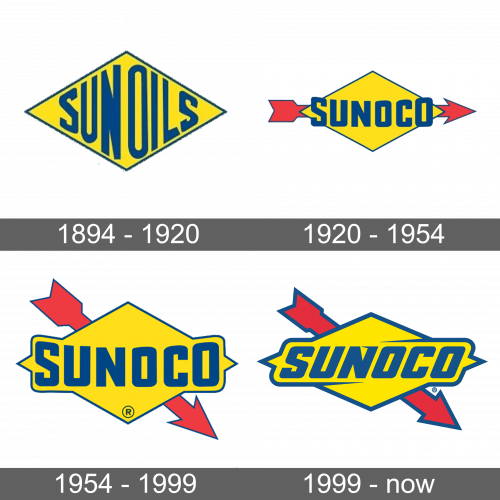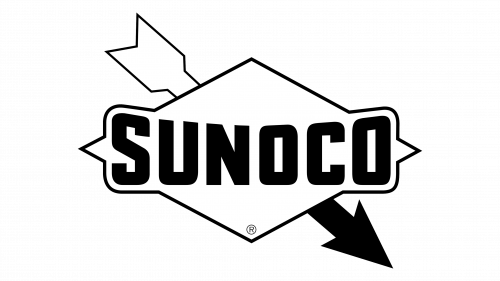Sunoco Logo
Sunoco is an American retail gas supplier headquartered in Dallas, Texas. Today they are the prominent fuel distributor in the US market, delivering motor gas to 5,2K Sunoco-marketed stations mainly controlled by some other companies. The partnership has made its way toward the leading position in the market through a petroleum refinery, chemical industry, and retail sales but disbanded its previous businesses, concentrating on gas distribution.
Meaning and history
Sunoco started in Ohio as a venture enterprise, registered in 1886, with a task to expand the petroleum production businesses of Joseph N. Pew, Phillip Pisano, and Edward O. Emerson. The newly formed partnership named ‘The Peoples Natural Gas Company’ acquired several oil pipes, fuel stations, and storage reservoirs within the next four years, making its way to the leading oil supplier in the state.
Buying new stations and pipes, the company changed its name and logo several times, with the first rebranding occurring in 1890 when PNGC became Sun Oil Company of Ohio and approved the new logo. The following rename and redesign took place in 1922, three years before the Sun Oil Company first entered the New York stock exchange.
In 1953, the enterprise built a 15,000 BPD refinery plant in Sarnia, Canada, thereafter expanding its operations abroad. Four years later Sun Oil started its activities in Venezuela, reaching total manufacturing of a million barrels a day until the Venezuelan government nationalized their local branches in 1975. Along with the American growth, Sun Oil spread its product in Europe, establishing Sun Oil Espana S.A. in 1981.
Now, this is a prominent oil company in the US, focusing on gas production and it’s delivering to fuel stations primarily across the United States. One of the most important values is the impressive quality of Sun Oil products which is achieved by constant research conducted by Sun Oil.
- What is Sunoco?
Sunoco is an American distributor of gas for fuel stations, established in 1886 and now based in Texas. Being one of the leaders in the US petroleum market, Sunoco is a fuel supplier for 5,2K gas stations across 30 states of the USA.
1894 – 1920
The pioneer brandmark featured a yellow rhombus with the blue ‘Sun Oils’ inscription occupying most of its space and getting bolder up to the center. This effect made the lettering look compressed.
1920 – 1954
The rhombus got flatter and narrower compared to its previous variant. It shows the ‘Sunoco’ nameplate as the dominant part, but the lettering now stands over the figure, coming beyond it with the first and last characters. Updating the brand signature, they added a notable detail: a red and blue arrow skewering the rhomb from left to right.
1954 – 1999
The contour of the rhomb was altered to fit the first and the last letters, while the arrow now pierced the rhomb diagonally from the top edge to the bottom one.
1999 – today
For the new century, Sunoco designers have prepared a new signature. It is close to its origins but still has its unrepeatable design. They italicized the inscription and added two strokes below and above it, so one can recognize the contours of a rectangle at the center of the rhombus, which got a darker color palette. In addition, they thickened the contours, making them way more visible.
Color
The color code of the latter logotype refers to the original 1894 logo with the dark blue shade for the lettering and dark yellow color for the rhombus. The red arrow comes through the rhombus, having the same blue contour as the figure does.
Font
The script used to write the nameplate resembles Mesquin Italic with a few mods. It shows a capitalized style with serifless letters, drawn with angular lines. The bold forms make the letters more distinctive. Finally, the tilting accompanied by a small stoke at the ‘n’ letter’s upper tip adds some motion to the inscription.

















